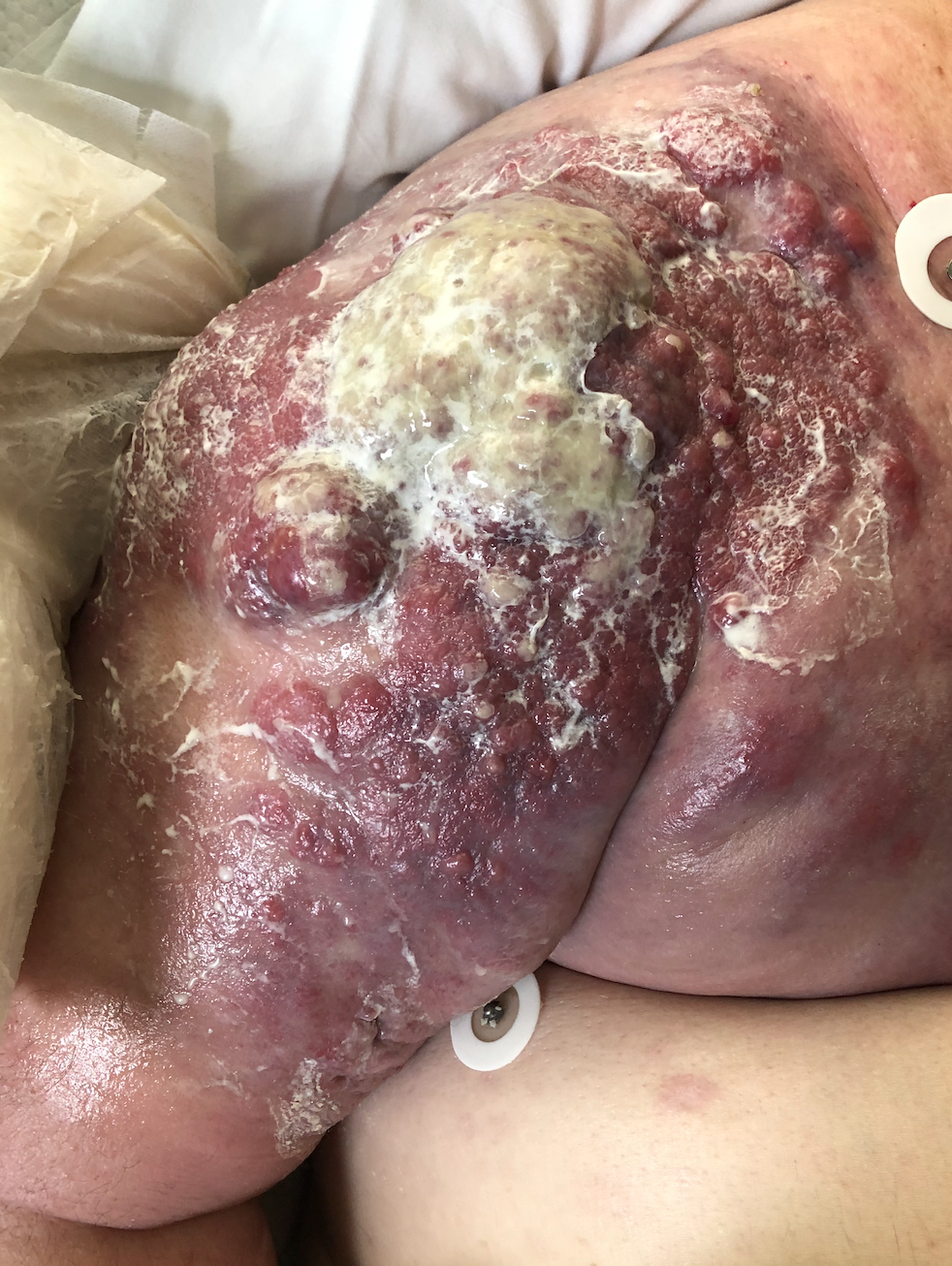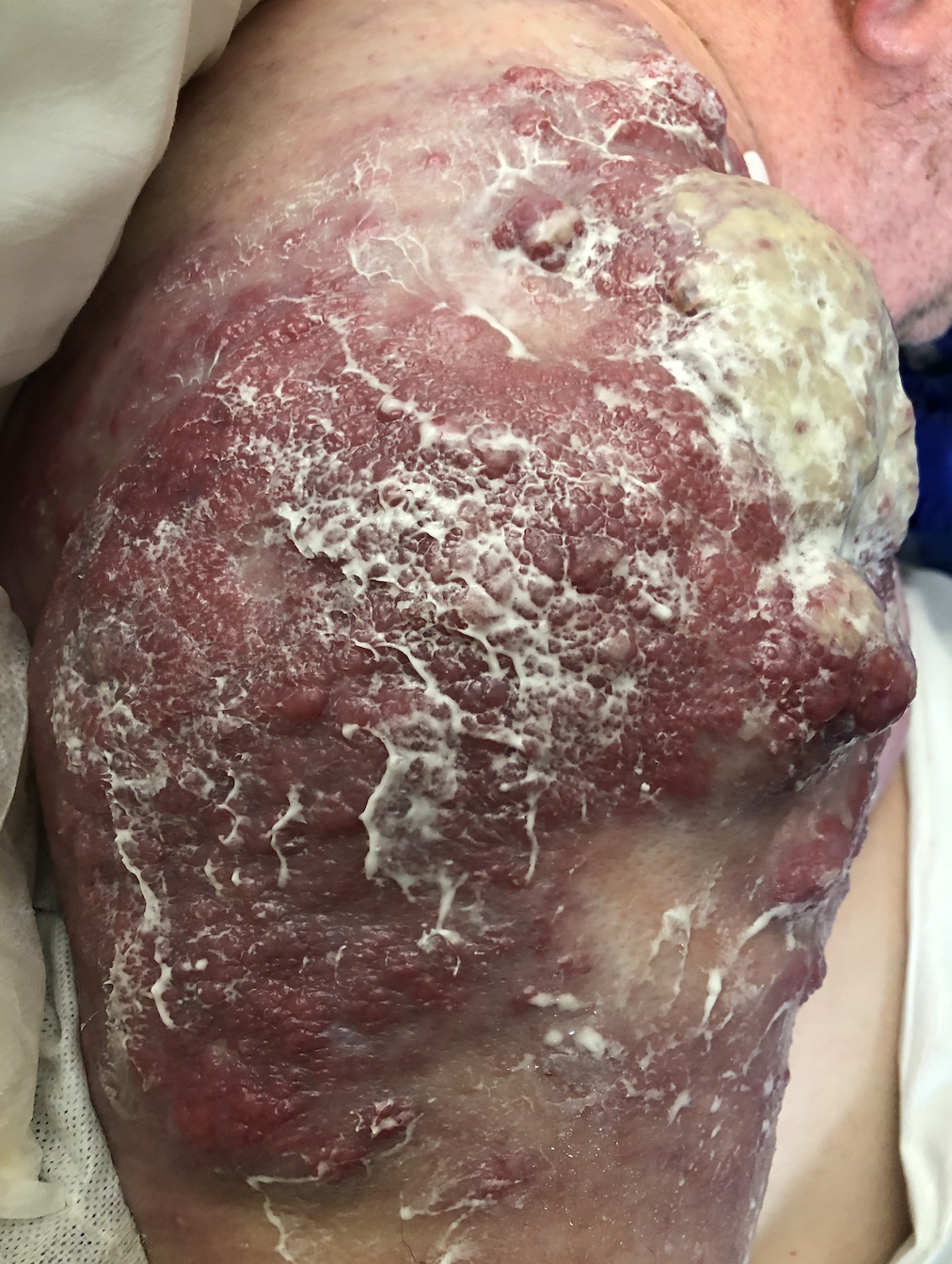Case Presentation: A 72-year-old man with known multiple myeloma is admitted to hospital for initiation of chemotherapy due to cancer progression. He was first diagnosed with smoldering myeloma in 2003. He was then diagnosed with multiple myeloma after a bone marrow biopsy in 2021 revealed 98% plasma cells. One year after diagnosis, he started noticing nodular lesions on his left side occipital scalp and his right shoulder. Skin biopsy confirmed the diagnosis of plasmacytoma. Over the next few months, chemotherapy was put on hold as the patient developed pneumonia and skin and soft tissue infections. This led to exponential increase in the size of his right shoulder lesion which spread to his anterior chest and transformed into a fungating lesion. Dermatology and wound care were consulted and recommended using Vaseline with sulfadiazine cream with non-stick telfa pad for daily dressings. After re-initiation of chemotherapy, his cutaneous findings started improving with near complete resolution in 2 weeks.
Discussion: Multiple myeloma (MM) is a plasma cell neoplasm that is characterized by the abnormal release of monoclonal immunoglobulins. Associated symptoms include immune paresis, bone wasting, renal failure and neurological dysfunction due to the increased concentration of immunoglobulins raising the viscosity of blood. Even though extramedullary plasmacytomas can arise in patients with multiple myeloma at any time during the course of the disease, skin involvement is a rare finding of MM. Here we describe a case of an extensive fungating lesion that when biopsied revealed multiple myeloma plasma cells. While skin lesions are well described with solitary plasmacytomas, we only found 2 case reports in the literature on skin findings associated with multiple myeloma. Our patient’s skin lesion was rapidly responsive to chemotherapy for MM.
Conclusions: This is a rare presentation of multiple myeloma which can be distressing and concerning for the patient due to its appearance, need for wound care, and rapid growth. It is important to initiate treatment for MM in these patients since these skin lesions may be rapidly responsive to systemic therapy.


